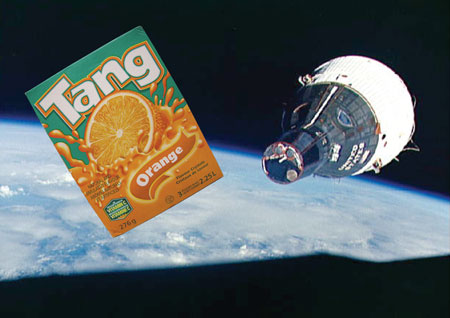Module 7 Intro
1. Module 7 Intro
1.9. Lesson 2 Intro
Module 7—Chemical Analysis
Lesson 2—Titration Analysis
 Get Focused
Get Focused

Photo courtesy of Kennedy Space Center/NASA
In the mid-1960s, Tang (orange drink crystals) was used by astronauts during the Gemini spaceflights. One of the reasons for using Tang on this and current space missions is that it helps mask the taste of the by-products in the water the astronauts drink. A second benefit is that Tang contains high concentrations of vitamins A and C, helping astronauts meet their daily nutritional requirements.
The nutritional information on a juice box indicates that citrus juice is a rich source of vitamin C. The average daily requirement for vitamin C is 90 mg for men and 75 mg for women. Some juice boxes indicate that the product contains 80% of the recommended daily intake for vitamin C. If the claim on the juice box is true, how much vitamin C must be present in the juice solution?
How can you verify that the quantity of vitamin C you calculated is actually present in the juice? The obvious answer is that you would have to test the juice. As a consumer, you may have wondered if you are really getting what you are paying for.
How can you test juice to determine the concentration of vitamin C in it? In this lesson you will learn about titration—a process routinely used to determine the concentration of substances in a solution.
Essential Questions
-
How can titration be used to calculate the quantity of solute in a solution?
 Module 7: Lesson 2 Assignment
Module 7: Lesson 2 Assignment
Save a copy of the Module 7: Lesson 2 Assignment to your course folder. You will receive more information about how to complete this assignment later in the lesson.
You will also work on Module Assessment (Part 3)—Analytic Measurement Technology. This is the third part of your Module Assessment. Save a copy of your work in your course folder. At the end of Lesson 3, you will submit all parts of this the Module Assessment to your teacher.
You must decide what to do with the questions that are not marked by the teacher.
Remember that these questions provide you with the practice and feedback that you need to successfully complete this course. You should respond to all the questions and place those answers in your course folder.